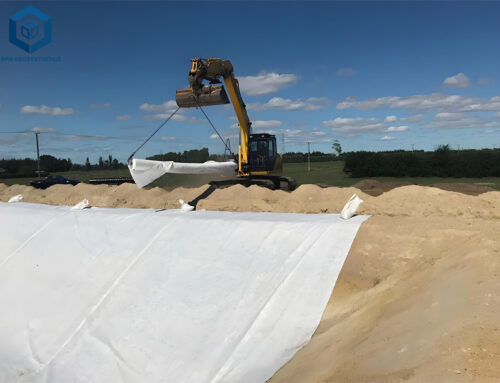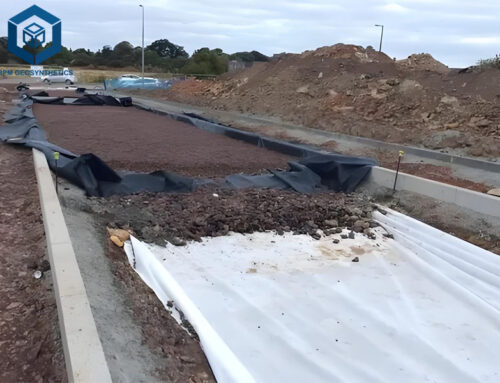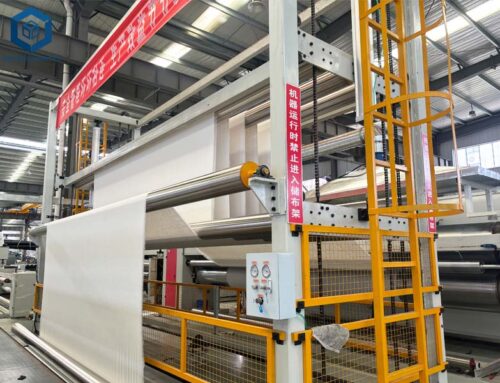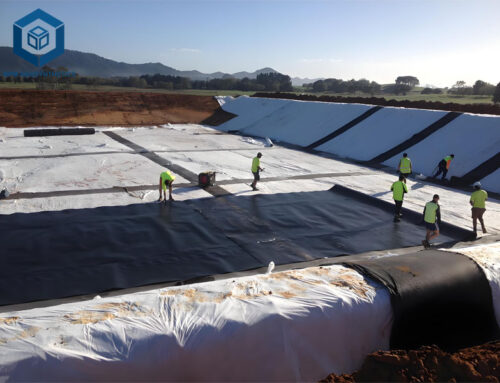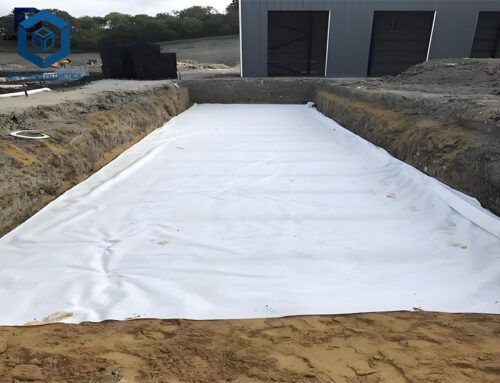A strong, long-lasting driveway starts with the right foundation—and that’s where geotextile fabrics come in. As a key component in modern construction, geotextile for driveway projects helps stabilize the ground, prevent soil mixing, and improve drainage. But how do you select the best one for your needs?
At BPM Geotextile, we specialize in high-quality non-woven and woven geotextiles designed for durability and performance. The right choice depends on factors like soil type, load requirements, and drainage needs. Non-woven geotextiles are ideal for filtration, while woven geotextiles offer superior strength for heavy loads.
Choosing the correct weight (e.g., 4 oz to 8 oz) and proper installation ensures your driveway stays crack-free for years. Trust BPM Geotextile for expert advice and premium materials—your driveway’s best defense against erosion and settling!
1. What Is Geotextile for Driveway?
1.1 Definition of Geotextile
Geotextile is a permeable geosynthetic material made from polyester or polypropylene fibers, available in woven and non-woven forms. Typically 4-6 meters wide, it offers excellent filtration, drainage, reinforcement, and erosion control.
Non-woven geotextiles are most common in construction, providing superior separation, stabilization, and seepage prevention. Compared to traditional methods like concrete, geotextiles reduce costs, simplify installation, and improve durability.
At BPM Geotextile, we supply high-performance fabrics for roads, drainage systems, and erosion control. Lightweight yet strong, our geotextiles extend project lifespans while cutting maintenance needs.
1.2 The role of geotextiles
1.2.1 Isolation
Use polyester staple needle-punched geotextiles to isolate building materials (such as soil and sand, soil and concrete, etc.) with different physical properties (particle size, distribution, consistency and density, etc.). Make sure that two or more materials do not flow or mix, maintain the overall structure and function of the materials, and enhance the bearing capacity of the structure.
1.2.2 Filtration (anti-filtration)
When water flows from the fine soil layer into the coarse soil layer, the good air permeability and water permeability of polyester staple needle-punched geotextiles are used to allow water to pass through, and effectively carry soil particles, fine sand, small stones, etc., to maintain the stability of water and soil engineering.
1.2.3 Drainage
Polyester staple needle-punched geotextile has good water-conducting properties. It can form drainage channels inside the soil and discharge excess liquid and gas in the soil structure.
1.2.4 Reinforcement
Polyester staple needle-punched geotextile is used to enhance the tensile strength and deformation resistance of the soil, enhance the stability of the building structure, and improve the quality of the soil.
1.2.5 Protection
When the water flow scours the soil, it effectively diffuses, transmits or decomposes the concentrated stress to prevent the soil from being damaged by external forces and protect the soil.
1.2.6 Anti-puncture
Combined with geomembrane, it becomes a composite waterproof and anti-seepage material, which plays an anti-puncture role.
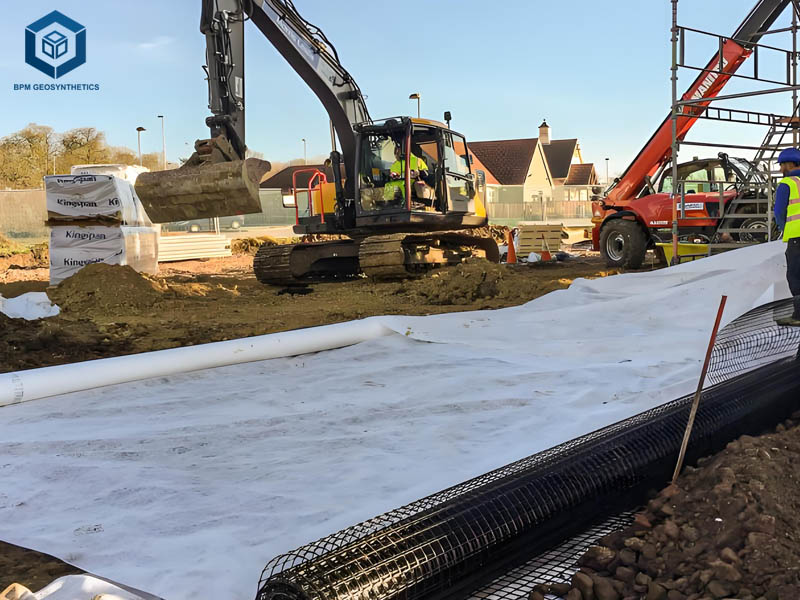
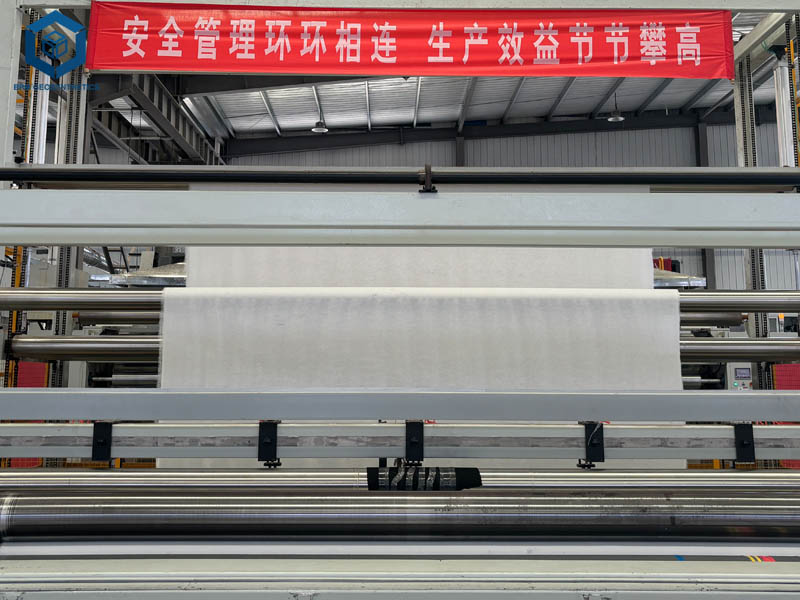
2. What are the types of Geotextile for Driveway?
The specific types of geotextiles mainly include the following, each type has its own unique advantages and disadvantages:
2.1. Non-woven geotextile
- Advantages: Good water permeability and effective drainage.
- Lightweight, easy to construct and lay.
- Has good filtration performance and prevents soil particles from being lost.
- Disadvantages: Relatively low strength, not suitable for occasions with high loads.
- Vulnerable to ultraviolet rays and chemicals, poor durability.
2.2. Woven geotextile
- Advantages: High strength, suitable for bearing large loads.
- Strong durability, good resistance to ultraviolet rays and chemical corrosion.
- Disadvantages: Poor water permeability, filtration performance is not as good as non-woven geotextile.
- Relatively complex during construction and high cost.
2.3. Composite geotextile
- Advantages: Combines the advantages of non-woven and woven geotextiles.
- At the same time, it has good filtration and strength performance.
- Applicable to a variety of engineering needs and strong flexibility.
- Disadvantages: High cost, relatively complex construction requirements.
3. What are the key factors in choosing Geotextile for Driveway?
When selecting geotextiles, the following key factors need to be considered:
3.1. Geotextile for Driveway – Project purpose
Determine the main function of the geotextile, such as reinforcement, drainage, filtration or anti-seepage.
3.2. Geotextile for Driveway – Soil type
Choose the appropriate type of geotextile according to the properties of the soil (such as particle size, moisture, etc.) to ensure its best performance.
3.3. Geotextile for Driveway – Strength and durability
Consider the strength required for the project and choose a high-strength geotextile to withstand possible loads and stresses. BPM geotextiles are strong and can maintain sufficient strength and elongation in both dry and wet states due to the use of plastic fibers. At the same time, durability is also an important factor, especially when used in harsh environments.
3.4. Geotextile for Driveway – Water permeability and filtration performance
Evaluate the required water permeability to ensure that water can be effectively discharged to prevent soil saturation. At the same time, filtration performance should be able to prevent soil particles from being lost.
When water flows from the fine soil layer to the coarse soil layer, the BPM geotextile uses the good air permeability and water permeability of the polyester staple needle-punched geotextile to allow water to flow through, effectively intercepting soil particles, fine sand, small stones, etc., to maintain the stability of water and soil engineering.
3.5. Geotextile for Driveway – Environmental conditions
Consider the weather resistance, UV resistance and chemical corrosion resistance of the geotextile in the engineering use environment.
BPM geotextile is corrosion-resistant and can resist corrosion for a long time in soil and water with different pH values.
3.6. Geotextile for Driveway – Construction requirements
Convenience and complexity of construction are also considerations. Choosing materials that are easy to lay and handle can reduce construction costs and time.
3.7. Geotextile for Driveway – Economy
Consider cost and performance comprehensively and choose geotextiles with high cost performance within the budget.
3.8. Geotextile for Driveway – Specifications and standards
Ensure that the selected materials meet relevant industry standards and specifications to ensure the safety and reliability of the project.
4. What are the performance indicators of Geotextile for Driveway?
When selecting geotextile for driveway applications, consider these critical performance indicators to ensure durability and stability:
4.1 Material Type
- Non-woven (best for filtration & drainage)
- Woven (higher strength for heavy loads)
4.2 Weight (GSM – Grams per Square Meter)
- 4–6 oz (120–200 gsm) for light-duty driveways
- 8–10 oz (250–350 gsm) for heavy vehicles
4.3 Tensile Strength
- Minimum 20–30 kN/m (woven) or 10–15 kN/m (non-woven) to resist rutting and shifting.
4.4 Puncture Resistance
- Should withstand 500–800 N to prevent damage from sharp rocks.
4.5 Permeability (Hydraulic Conductivity)
- Allows water drainage (≥ 0.1 cm/sec) to prevent waterlogging.
4.6 UV Resistance
- Treated geotextiles last longer under sunlight exposure.
4.7 Elongation at Break
- < 50% for woven, 50–80% for non-woven to maintain stability.
BPM Geotextile offers high-quality driveway geotextiles with optimal strength, filtration, and durability—ensuring long-lasting performance.
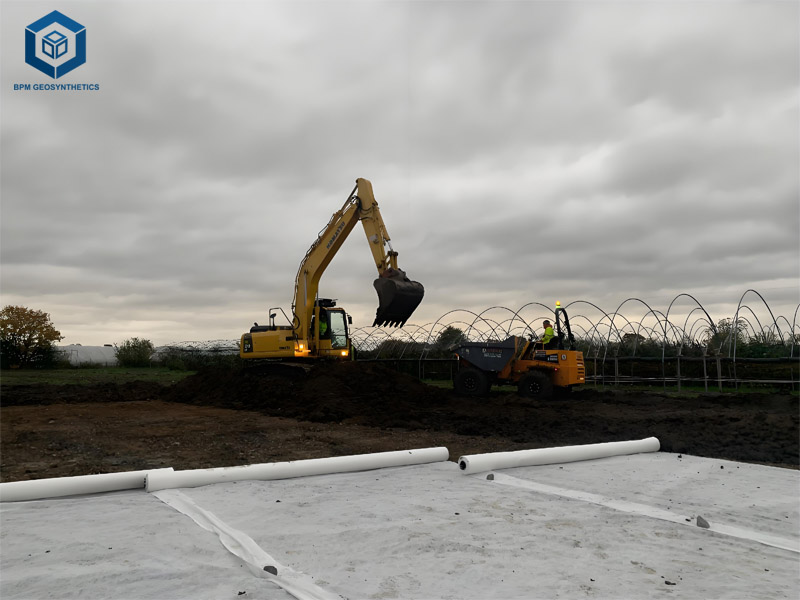
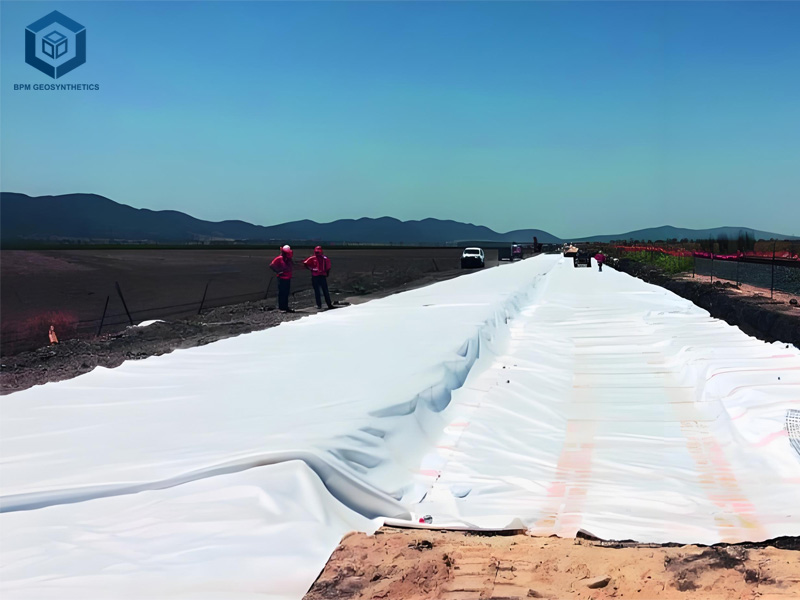
5. Construction considerations
The laying method of geotextile mainly includes the following steps
5.1 Preparation:
Before laying geotextile, the laying area needs to be cleaned and leveled. Remove debris and sharp objects in the laying area to ensure the flatness and solidity of the laying surface. In addition, the quality and integrity of the geotextile need to be checked to ensure that there is no damage or defects.
5.2 Laying geotextile:
According to the site conditions, determine the laying direction and overlap method of the geotextile. The geotextile can be connected by overlapping, stitching or welding. When laying geotextile on the slope, one end of the geotextile should be anchored first, and then it should be lowered along the slope to ensure that the geotextile remains taut. When laying, care should be taken to avoid wrinkles and twists to ensure the flatness and stability of the geotextile.
5.3 Seam treatment:
The seams of the geotextile should be properly treated to ensure its sealing and stability. Common seam treatment methods include stitching and welding. When suturing, the same suture thread as the geotextile material should be used, and the chemical corrosion resistance and UV resistance of the suture thread should be ensured. When welding, special welding equipment should be used, and the relevant welding process and parameters should be followed. The joints should be quality checked to ensure that there is no leakage or cold welding.
5.4 Protection measures:
During the laying of geotextiles, appropriate protection measures should be taken to avoid damage to the geotextiles. For example, sandbags or heavy objects can be used to fix the geotextiles on the ground to prevent them from being blown or moved by the wind. At the same time, construction personnel and mechanical equipment should be prevented from causing impact or scratches on the geotextiles.
5.5 Acceptance and maintenance:
After laying, the geotextiles should be inspected and maintained. Check whether the laying quality and joint treatment of the geotextiles meet the requirements, and repair any damage or defects in time. In the subsequent construction and use process, care should be taken to protect the geotextiles from damage, and regular inspections and maintenance should be carried out to extend their service life and maintain their functional effects.
6. Summary
Choosing the right geotextile for your driveway requires balancing strength, filtration, and durability. For light-duty residential driveways, a 4-6 oz non-woven geotextile provides excellent filtration and separation while allowing proper drainage. Heavy-duty or commercial driveways handling trucks or frequent traffic need an 8-10 oz woven geotextile with higher tensile strength (20-30 kN/m) and puncture resistance. Key considerations include the soil type, expected vehicle loads, and drainage needs—clay soils demand higher permeability geotextiles to prevent water buildup. UV resistance ensures long-term performance in exposed areas. BPM Geotextile offers engineered solutions matching these requirements, helping extend your driveway’s lifespan by preventing aggregate mixing, improving stability, and reducing maintenance costs. Proper selection and installation create a stable base that resists rutting and erosion over time.

